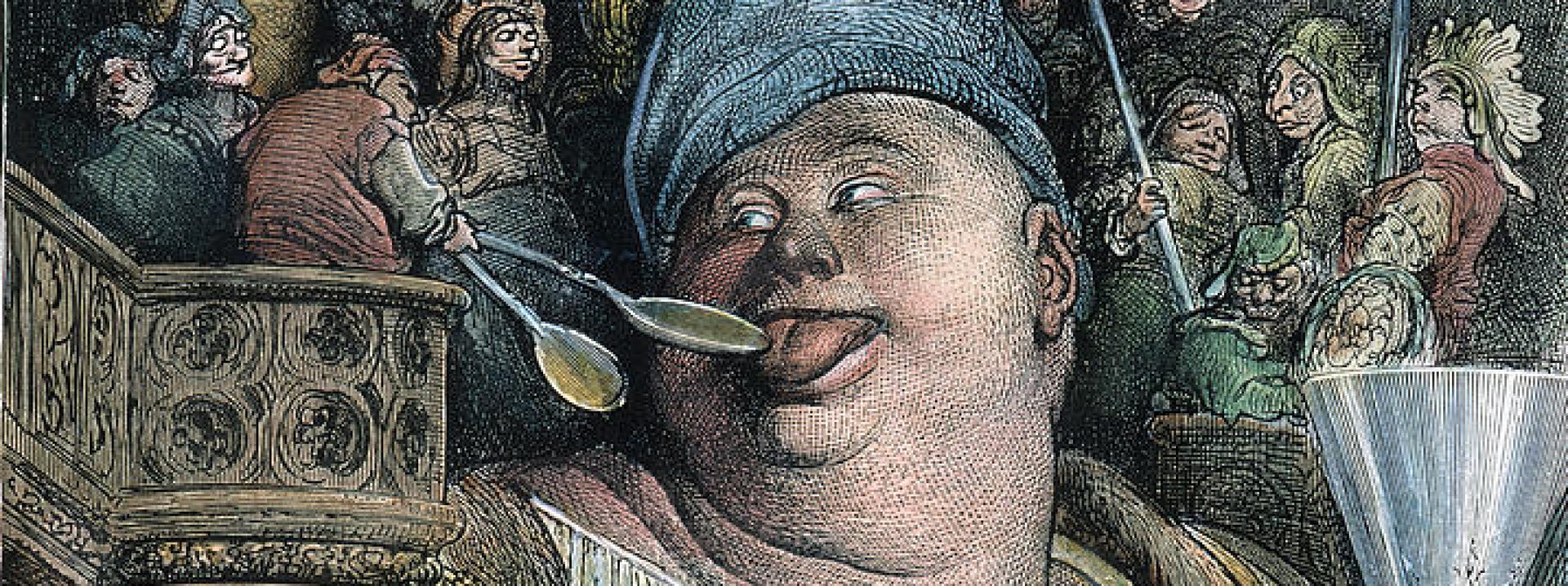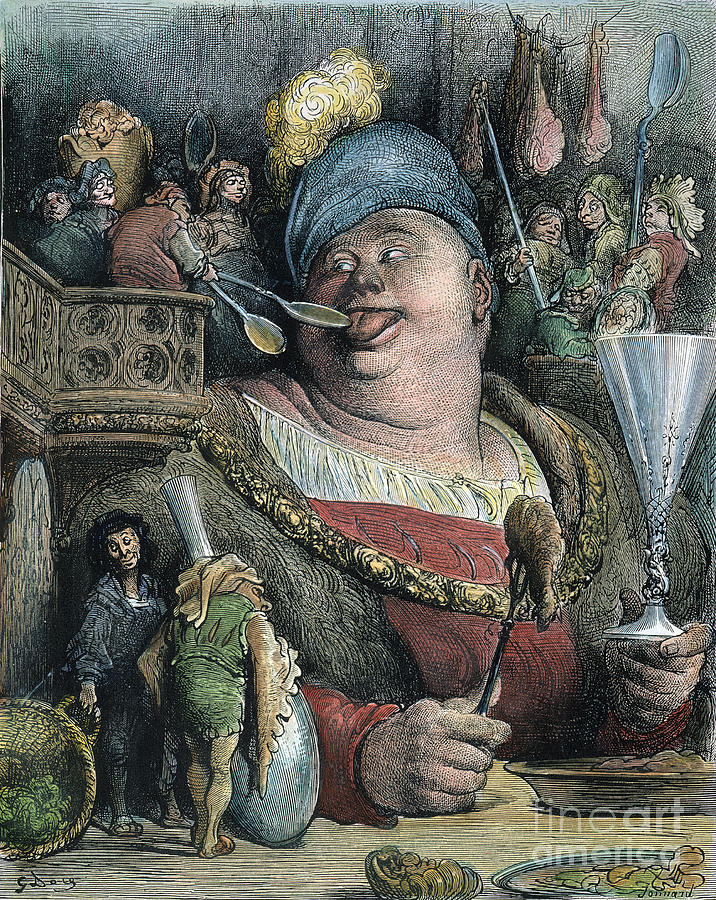Flannery O’Connor and The Southern Grotesque
For my appetizer post this week I want to look at examples of the Southern Grotesque/Gothic, in particular the works of Flannery O’Connor, and see how it is comparable to Bakhtin’s version of the grotesque.
The grotesque in southern literature is extremely character-driven. Flannery O’Connor’s characters in her short stories are often referred to as “grotesques,” meaning that they are more caricatures of people than real people, representing harsh realities of the south such as prejudice, religious hypocrisy, and extreme southern identity. O’Connor writes in her essay “Some Aspects of the Grotesque in Southern Fiction,”
“In these grotesque works, we find that the writer has made alive some experience which we are not accustomed to observe every day, or which the ordinary man may never experience in his ordinary life. We find that connections which we would expect in the customary kind of realism have been ignored, that there are strange skips and gaps which anyone trying to describe manners and customs would certainly not have left. Yet the characters have an inner coherence, if not always a coherence to their social framework. Their fictional qualities lean away from typical social patterns, toward mystery and the unexpected. It is this kind of realism that I want to consider.”
Link to the whole essay in case you’re interested: http://www.en.utexas.edu/Classes/Bremen/e316k/316kprivate/scans/grotesque.html
A lot of readers find these grotesques, and the violence that often accompanies them, disturbing, but O’Connor, rather than avoid, embraces such discomfort.
In her short story “A Good Man is Hard to Find,” (a story where a family road trip goes very, very wrong) all of the characters are “grotesques” to some extent. The grandmother is selfish, the children spoiled and rude, and the Misfit is, of course, a mass murderer who reads as a caricature of a mass murderer. I’ve linked the story below, but I you guys don’t have to read the whole thing (or any of it), as I’ve already included a bit of reading above and I recognize that we’re all very busy right now 🙂
link to the whole story here if you’re interested: https://repositorio.ufsc.br/bitstream/handle/123456789/160332/A%20good%20man%20is%20hard%20to%20find%20-%20Flannery%20O%27Connor.pdf
Questions:
- In her article “Revisiting the Southern Grotesque: Mikhail Bakhtin and the Case of Carson McCullers,” Sarah Gleeson-White writes that the southern grotesque, as well as Bakhtin, focus on “the oddness of embodiment,” and how in both cases there is a dependence on caricature and exaggeration. Considering these similarities, to what extent can we equate the Southern Grotesque with Bakhtin’s grotesque?
- O’Connor puts a lot of emphasis on “realism” in her work, claiming that it is at the center of all her work. Considering how O’Connor’s work is largely viewed as grotesque, can we infer that realism is at the root of the grotesque in general?
- Flannery O’Connor’s version of the southern grotesque is sometimes referred to as a “Catholic Grotesque,” meaning that she examines the strange and ugly within Catholicism. Considering what we know about Bakhtin’s version of the grotesque, is there any version of the “Catholic Grotesque” that appears in Rabelais?
Link to Gleeson-White article if you are interested: https://www-jstor-org.proxy.brynmawr.edu/stable/20078304?casa_token=UNSysiLXwcsAAAAA:FIBNYZ6lDlV0FEvvKTJHV3d2cANxiOqP7Ysc3T3f5AMHEcGYARWTzrew_QG34y9wsDepDm6tllA_8hwOTQwUu8sNiEO5XwaK7EmjcVsiujMENzZdDjo&seq=1#metadata_info_tab_contents


I think both the Southern Grotesque and Bakhtin’s Grotesque openly express the truth that people want to hide or avoid. Under the long-term education and training (especially in some religious places), a strictly and detailedly portrayed image of “ideal citizen” has been emphasized; in these social circumstances, people have their desires and impulses hidden deeply, but they can’t get rid of them completely. However, these hidden things are not only expressed in Southern Grotesque and some other works we have seen, they are even discussed and focused as if the world is built by grotesque only. In this case, I would agree that realism is at the root of the grotesque. Moreover, it seems to me that the Southern Grotesque presents the culture and truth of the minority under the public gaze. Since this kind of literature is a fictional framework filled up by realism, the stories of minorities are more easily accepted rather than criticized.
Intervention:
So in “Some Aspects of the Grotesque in Southern Fiction,” O’Connor refers to Thomas Mann when she writes:
“Thomas Mann has said that the grotesque is the true anti-bourgeois style, but I believe that in this country, the general reader has managed to connect the grotesque with the sentimental, for whenever he speaks of it favorably, he seems to associate it with the writer’s compassion.”
How does this quote (either Mann’s or O’Connor’s perspective) relate to Bakhtin’s view of the grotesque. Can we maybe apply it to the works of Rabelais?
I understand the reason why Mann said this, but I think grotesque literature cannot be used as a sample of sociological research or a case of social class struggle. Both the works of O’Connor and Rabelais are very subjective and full of their own emotions, but their works are not complaints or catharsis. As we discussed before, Bakhtin does not think that Rabelais criticized society or humanity through carnivalesque, and I think O’Connor’s attitude towards carnivalesque is similar. In the articles by O’Connor and Bakhtin, they showed how carnivalesque demonstrates the form of society as a whole, rather than a single class or an individual. Although we do see that in this kind of literature, the authors might have a more detailed depiction of a certain group of people or an event (like Rabelais’ description of monks), these are not the main points that they want to emphasize.
Maybe Mann meant anti-bourgeois in the sense that the embrace of sentimentatlity by O’Connor’s grotesque is anti-modern. Wiki has a good definition of modernity, calling it the development of individualism, capitalism, urbanization and a belief in the possibilities of technological and political progress. Modernity hadn’t developed yet in Rabelais’ time but the foundations were being laid. I think that when Rabelais wrote, the elite and popular cultures were still intimately connected, giving and receiving much of each other to the other. In the 20th century the relationship has become much more assymetrical in favor of elite culture. Thinking of Gramsci, the elite has built cultural hegemony and uses it to maintain their systems of power. In this way it seems that the grotesque has become a more specific reaction to alienating features of modernity.
Gleeson-White opens her essay with definitions of Southern Grotesque, that she says focus too much an “alienating modernity.” I think there is a similarity between new readings of the Souther Grotesque with Bakhtin’s grotesque because both projects are trying to bring forward counternarratives of their two respective settings. Bakhtin rejects that the Renaissaince was a period of elite-driven, seamless transition to early modernism. I’m not sure if the Southern Grotesque knows what it is supposed to resist, however. So much of Southern modernity came from innovations of control of Black people and the exploitation of their labor (convict leasing, chain gangs, Jim Crow, lynching). From what I gathered from the essay, she does not directly contend with that. I’m left with the question of when is it meaningful to read resistance in transgressions of gender and body if the state of transgression is applied differently based on race?
Reflection
So this was a big and ambitious topic to cover, and I definitely should have worked harder to make it more narrow. I did my best to focus on Flannery O’Connor’s essay “Some Aspects of the Grotesque in Southern Fiction,” however, I found that this essay revolved around the Southern literature writing process more than it did elements of the Southern Grotesque. O’Connor has two main points about the Southern Grotesque in her essay: 1) that “anything that comes out of the South is going to be called grotesque by the Northern reader, unless it is grotesque, in which case it is going to be called realistic,” a point anchors O’Connor’s idea that the core of the grotesque is realism. 2) O’Connor also alludes to the character-based nature of the Southern Grotesque. In my initial post, I included the quote, “the characters have an inner coherence, if not always a coherence to their social framework. Their fictional qualities lean away from typical social patterns, toward mystery and the unexpected” from “Some Aspects of the Grotesque in Southern Fiction.” O’Connor relates this to her focus on realism. The characters presented in the works of Flannery O’Connor are often referred to as “grotesques,” meaning that they are caricatures of real people, that caricature meant to expose some of the harsh realities of life in the South.
While there are certainly similarities between the exaggerated characteristics of O’Connor’s grotesques and the exaggerated bodies and appetites of those Bakhtin describes as grotesque, these two depictions of the grotesque are not often equated with each other. That is why I found the Gleeson-White article so interesting. I think this appetizer post would have been more effective had I paid more attention to Gleeson-White’s article “Revisiting the Southern Grotesque: Mikhail Bakhtin and the Case of Carson McCullers,” because this ties directly into the conversations we have been having in class, in terms of the exaggerated body, as well as how female sexuality is handled by grotesque writers. I also found Collin’s point drawn from the Gleeson-White article about how “there is a similarity between new readings of the Southern Grotesque with Bakhtin’s grotesque because both projects are trying to bring forward counter-narratives of their two respective settings” really interesting because I think of the grotesque as a more focused way of analyzing the human. Unlike a lot of Renaissance (and really, Medieval) writers, Rabelais does not make Nature a guide for his characters, or make his story some sort of dream vision, but instead grounds his story in the human, creating this “counter-narrative” (in a very broad sense) that is similar to what writers of the Southern Grotesque experiment with.